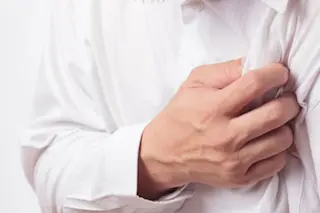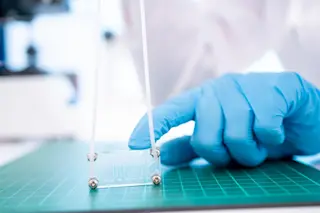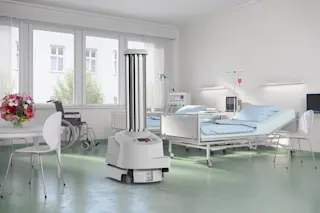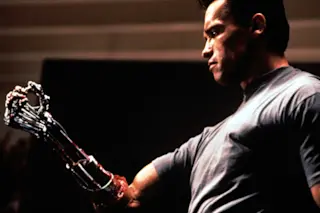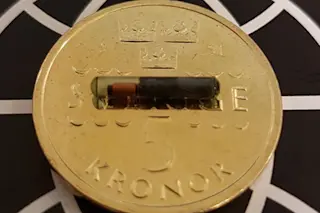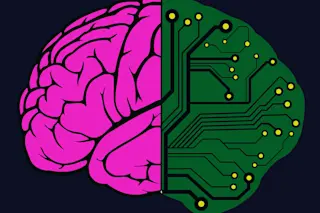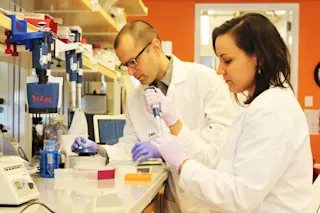Molecules called microRNAs are the body’s orchestra conductors, directing genes involved in the development of cells. Exploiting that power, researchers are now using microRNAs to convert the scar tissue of damaged hearts into healthy muscle cells, opening the door for a better therapy after heart attacks and heart failure.
Duke University cardiovascular researcher Victor Dzau isolated four microRNAs crucial to cardiac development and injected them into mice with scarred hearts. Within a few weeks, scar tissue cells (pictured above, magnified 500 times) had morphed into muscle within beating mouse hearts.
The technique’s success in the body of an animal (rather than just cells in a petri dish) has Dzau hopeful that he can adapt it to treat humans within a decade. And while his therapy will focus on the heart, he hopes other scientists will exploit microRNA for different purposes, such as regenerating nerve cells in stroke patients.


